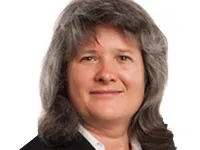
Is Mindanao the most exciting power market in Asia?
By Sarah FairhurstFor many people the word “Mindanao” conjures up pictures of beaches, terrorists, or more recently, terrible flooding and loss of life. With over a thousand people dead from Typhoon Sendong, it’s hard to believe there is good news in Mindanao. But for those interested in power generation, there is much more going on in this southern island of the Philippines.
AMRECO PSAG# , a group of 21 electricity co-operatives from north and eastern Mindanao recently launched a tender for a new power station to be built in their region. The only requirement is that the new generation can supply 300MW of baseload power from new developments. The tender has been deliberately kept fuel and technology neutral to encourage innovation and competition amongst bidders.
This is not the only development being discussed. Aboitiz Power, through its subsidiary Therma South Energy, has been planning a new power station in Davao to supply its distribution business there. However, NIMBYism is alive and well in Davao - and the local mayor is not keen on a 300MW coal fired power station being located close to the city. Aboitiz continues to work on options to find a suitable location that suits both the company and the locals.
The new build is being spurred by the growth in electricity demand in Mindanao of over 4% pa and frequent brownouts due to insufficient supply – equating to some 500MW of new supply required in the next five years. In 2010 there were brownouts of up to 8 hours per day due to the El Nino weather system that created a significant drought and cut off hydro generation. Hydro makes up over 50% of the capacity in Mindanao and the event highlighted the risks of relying solely on hydro for the majority of the power in the region.
Mindanao has some uniquely different features for new entrants to grapple with. Unlike the islands of Luzon and Visayas, there is no merchant power market in Mindanao. This means that new entry in Mindanao is driven by longer term power supply contracts, which are often more attractive to new entrants than the shorter term merchant contracts in the islands where markets exist. However, under the EPIRA#, NPC can no longer build new capacity nor offer long term, government guaranteed power contracts to new entrants. Consequently, the local distribution utilities and co-operatives have to manage power procurement themselves – a new challenge for them as they currently purchase the majority of their requirements from PSALM, who supplies from the existing NPC-owned and contracted plants.
Price is likely to be another challenge as new supplies are unlikely to be as cheap as depreciated hydro generation with minimal variable costs. Where competitive bidding is used to choose the new capacity, however, this lowers regulatory risks on contract approvals as it should ensure the most competitive new entry that is available, given local environmental and fuel constraints.
From the supply-side perspective, contracting with smaller distribution utilities and co-operatives requires a different approach. Credit-risk is likely to be a key area of focus and it will be necessary for international bidders to find approaches to manage credit without Government guarantees if they wish to compete with domestic suppliers with domestic funding. Similarly if the local utilities wish to attract international expertise, finance and fuel, they will also need to adapt.
What is clear from the recent tenders and announcements is that both international players and local utilities are rising to this challenge. Where else in Asia is this exciting?




















 Advertise
Advertise







